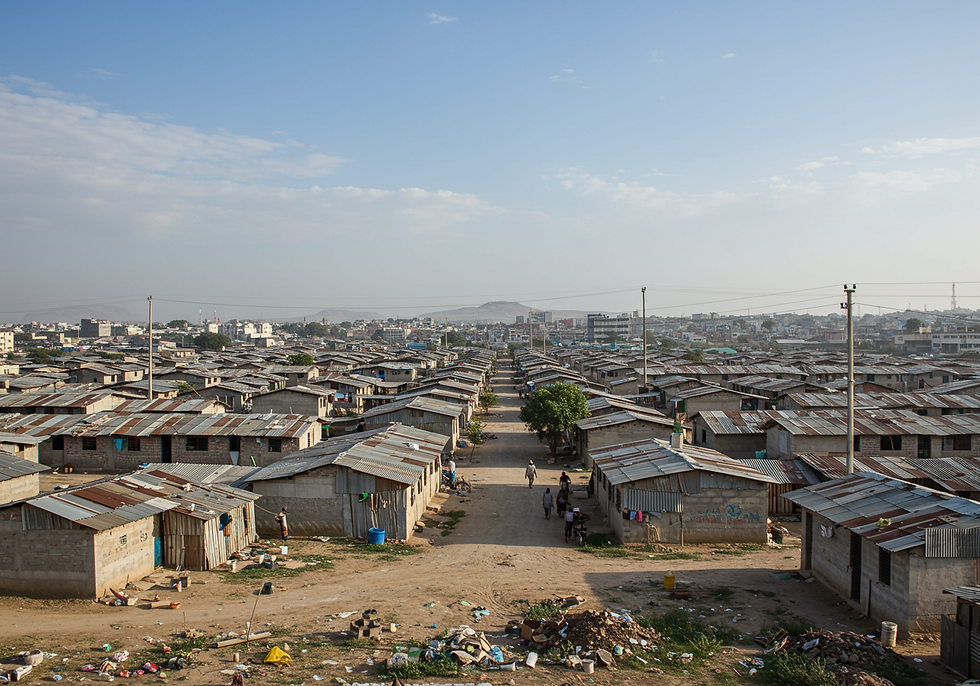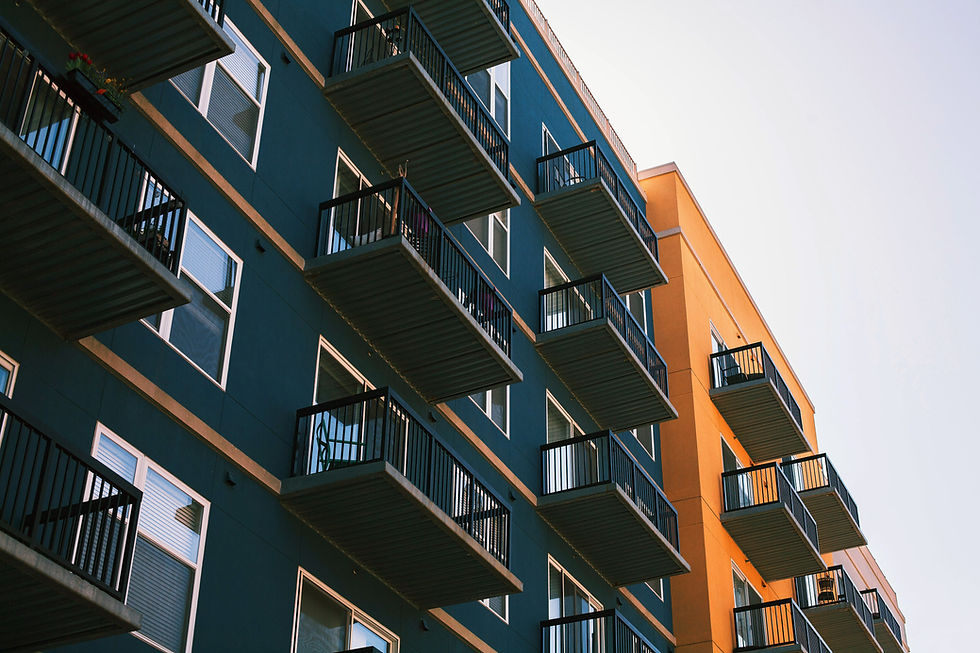A Comprehensive Approach to Housing on a Philippine Context
- Dennis Asis

- Oct 3
- 6 min read
Updated: Oct 3

This topic provides a foundational understanding of the multifaceted nature of housing within the unique socio-cultural and economic landscape of the Philippines. As you embark on your careers, it is imperative to move beyond the concept of mere shelter and delve into the intricate connections between dwellings, their inhabitants, and the broader societal context. Our goal is to equip you to design not just buildings, but thriving, resilient, and equitable Filipino communities.
a. Behavioral Aspects of Housing on a Philippine Context
The design of a house is not a neutral act; it actively shapes the lives and behaviors of its residents. The physical environment of a Filipino home can either support or hinder well-being, social interaction, and daily routines. Understanding these behavioral aspects is fundamental to creating spaces that are truly maaliwalas (spacious and well-ventilated) and conducive to the Filipino way of life.

The Psychology of Filipino Space:
The layout and design of a home have a profound impact on the psychological state of its inhabitants. In the Philippine context, this is deeply intertwined with cultural values.
Communal vs. Private Space:
Traditionally, Filipino culture emphasizes communal living, with a preference for shared spaces over strict privacy. The traditional bahay kubo, for instance, was often a single, multipurpose room. This inclination towards social interaction is still prevalent, with modern Filipino homes often featuring open-plan living and dining areas that serve as the heart of family life. However, the need for individual privacy is also a growing consideration, especially in dense urban environments.

A serene living room with cozy wooden furniture and warm lighting, where a person sits quietly, enjoying a moment of reflection. "Horror Vacui" or Fear of Empty Space:
A notable characteristic in Filipino design Housing on a Philippine Context sensibility is the tendency to fill up spaces with furniture, decorations, and memorabilia. This is not merely an aesthetic choice but is often linked to the idea that abundance signifies prosperity and that objects hold memories and connections to loved ones, especially those working overseas.

A cozy, well-lit living room filled with an extensive and colorful collection of figurines displayed in wooden cabinets. The space is inviting, with floral-patterned cushions on the sofa and personal decor, reflecting a passion for collecting unique artifacts. Flexibility and Adaptability:
Filipino spaces are often flexible, serving multiple functions. A living room can transform into a sleeping area for guests, and outdoor spaces like verandas or even streets often become extensions of the home for socializing, cooking, and celebrations.

In a cozy, wood-paneled living room, two women enjoy a relaxed conversation. Natural light streams through large windows, illuminating the room’s warm tones and eclectic decor. A colorful red rug and bookshelves filled with novels and trinkets add to the homely atmosphere.
Key Design Considerations for a Filipino Home:
Natural Light and Ventilation:
Given the tropical climate, maximizing natural light and ensuring cross-ventilation is paramount to creating a comfortable and energy-efficient home. This aligns with the traditional concept of maaliwalas.

Modern two-story home with spacious balconies and open living spaces, surrounded by lush greenery and a clear blue sky. Connection to Nature:
Incorporating elements of nature, such as indoor plants, courtyards, or even simple verandas, can significantly enhance well-being, a principle known as biophilia.
Territoriality and Personalization:
While communal living is valued, the ability for individuals and families to personalize their space and establish a sense of ownership is crucial for psychological comfort.

A vibrant community thrives in an open-air, multi-story apartment complex, where residents enjoy various activities, from relaxing in their homes to socializing in the lush courtyard.
b. Economic and Social Challenges
Access to safe, affordable, and secure housing is a cornerstone of a just and prosperous society. However, in the Philippines, this remains a significant challenge, deeply rooted in economic realities and social inequalities.

The Pervasive Housing Crisis:
The Philippines faces a significant housing affordability crisis, characterized by a substantial backlog of housing units.
Housing Backlog:
As of recent estimates, the housing backlog in the country stands at around 6.5 million units, a figure that is projected to balloon to 22 million by 2040 if not adequately addressed.
Affordability Gap:
A major driver of this crisis is the widening gap between surging house prices and stagnant wage growth. This makes homeownership an increasingly distant dream for many Filipino families, particularly those in the low-income and even middle-class brackets. Many families are forced to spend a large portion of their income on housing, leaving little for other essential needs.

Aerial view of densely packed stilt houses along a bustling waterway, with small boats navigating between the makeshift homes, illustrating the vibrant yet challenging living conditions of the community. Informal Settler Families (ISFs):
The lack of affordable housing options has led to the proliferation of informal settlements, with an estimated 3.7 million informal settler families nationwide. These communities often reside in hazardous areas, such as along waterways, making them vulnerable to flooding and other climate-related disasters. They also frequently lack access to basic services like clean water and sanitation.
Social Inequality and Exclusion:
Housing inequality in the Philippines is a stark reflection of broader societal disparities.
Unequal Access:
More affluent households have access to a wider range of housing options, including condominiums and single-family homes in well-developed subdivisions. In contrast, the urban poor are often relegated to substandard housing in informal settlements.

A sprawling informal settlement stretches towards the horizon under a clear blue sky, with rows of makeshift structures lined along dusty paths, illustrating the dense urban landscape on the outskirts of a growing city. Location, Location, Location:
Socialized housing projects, while well-intentioned, are often located in peri-urban areas far from employment centers and basic services. This can lead to a trade-off between affordable housing and access to livelihood opportunities, forcing many to choose the latter and remain in informal settlements.
c. Organizational and Institutional Challenges
The delivery of adequate and affordable housing is a complex process involving a multitude of public and private actors. Navigating this landscape in the Philippines presents significant hurdles.
Policy and Governance:
While the Philippine Constitution mandates the state to provide decent and affordable housing, the implementation of housing programs has faced persistent challenges. The creation of the Department of Human Settlements and Urban Development (DHSUD) aims to better coordinate housing policies and programs. However, issues such as fragmented policies and tedious bureaucratic processes for permits and licenses continue to hamper housing production.

The Romanian Consulate in Chernivtsi, Ukraine, displays a flag above its red-roofed building, surrounded by lush greenery and a cloudy sky. Financial Barriers:
Access to affordable financing is a major obstacle for both developers and homebuyers. Private developers often find the profit margins for low-cost and socialized housing unattractive, leading them to focus on the more lucrative mid- and high-end markets. For low-income families, stringent requirements from financial institutions and the inability to afford down payments are significant barriers to homeownership.

A modern duplex house on a sunny day, with a person standing in front of a neatly landscaped garden and a car parked in the driveway. Land Availability:
The scarcity and high cost of suitable urban land for socialized housing development is a critical challenge. This further pushes affordable housing projects to the urban fringe, away from economic opportunities.
d. Community Development Aspects
Housing should not be viewed in isolation but as an integral part of community and national development. A comprehensive approach must consider how housing can contribute to building resilient, sustainable, and socially cohesive neighborhoods.
Participatory Design and Community Empowerment:
Involving communities in the planning and design of their own housing is crucial for ensuring that the final product meets their needs and is culturally appropriate. This participatory approach has been successfully implemented in various projects in the Philippines, leading to higher user acceptance and a stronger sense of ownership. Community-led initiatives, such as savings groups and partnerships with local governments, have proven effective in creating resilient and affordable housing solutions.

A community meeting takes place outside a small wooden house, with residents sitting in a circle on the ground to discuss local issues. Housing as a Catalyst for Sustainable Neighborhoods:
Well-planned housing can serve as a catalyst for broader community development. The government's National Urban Development and Housing Framework emphasizes the importance of creating greener, more inclusive, and smarter urban systems. This includes:
On-site, In-city Resettlement:
Whenever possible, resettlement projects should be located within the city to avoid disrupting livelihoods and social networks.

Modern suburban neighborhood with contemporary two-story houses, lush greenery, and a clear blue sky. Pedestrians and cars can be seen on the well-maintained street, creating a tranquil and inviting residential atmosphere. Integration with Livelihoods and Services:
Housing developments should be integrated with access to employment opportunities, schools, healthcare facilities, and public transportation.
Disaster Resilience:
Given the Philippines' vulnerability to natural disasters, incorporating climate-resilient design and construction practices is essential for building safe and secure communities.
Head over to our Resource Section for more insights and useful references.





Comments